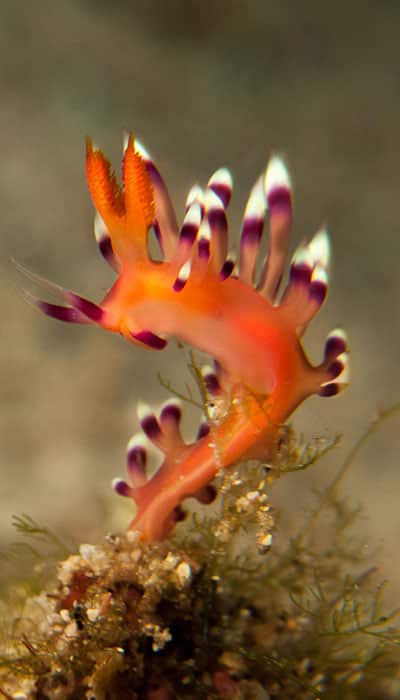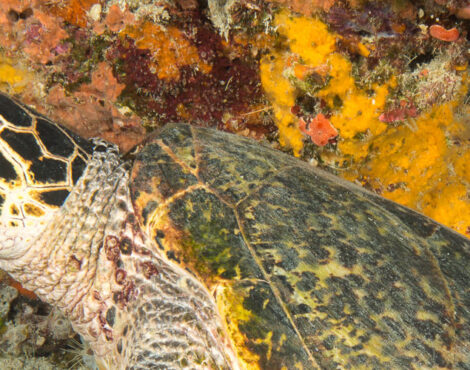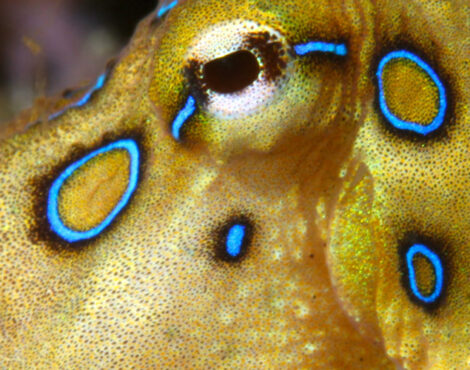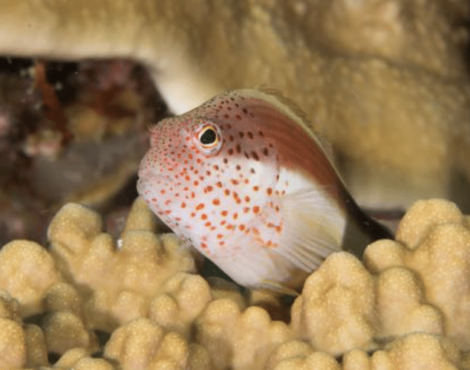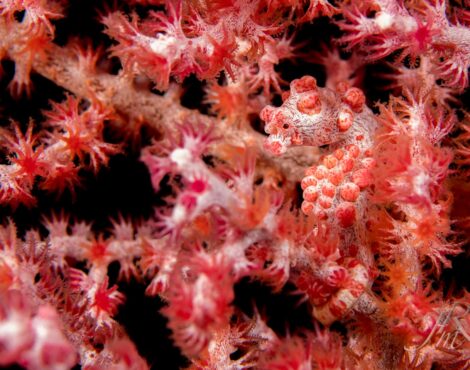Being at the very heart of the Coral Traingle, North Sulawesi is one of the biodiversity hotspots of the world. Bunaken Marine Park may be on the map for its extremely deep, vertical walls and crystal clear waters, what really makes the diving here truly world class is the sheer number of different species you can see. While everyone loves to see turtles and sharks, one critter often becomes and obsession amongst divers who are seeking to “collect” them all, in photograph form of course.
Nudibranchs are essentially just slugs that happen to live underwater. While on the land, most people find slugs about as interesting as watching grass grow, but underwater these molluscs are more than just a slug. The word Nudibranch comes from the Latin words nudus which means naked, and the Greek word brankhia meaning gills. They are frequently referred as sea slugs, however it is important to note that there are other sea slugs that do not belong to the clade Nudibranchia. Nudibranchs can be broken into two categories; Dorids, which have a gill plume (flower shaped body part towards rear) and Aeolids, which have finger like projections, known as cerata spread across their backs instead of the branchial plume.
These cerata and gill plumes serve as the breathing mechanism for nudibranchs and the cerata on the Aeolids also contain the intestines. This is because Aeolids have the ability to steal certain traits of some of their prey, and use it for themselves. An example is the Glaucus Atlanticus, which preys on Portuguese man o’ war. It can capture their venomous bards and store them in its cerata, so anything that might try to predate it will get a nasty sting.
Nudibranchs can be found all over the world in tropical, temperate, arctic and Antarctic waters, however the highest concentration of species can be found in the tropics. They live at almost all depths of salt water, from the shallow intertidal zones to depths nearly 1000 metres. Recently a new species was discovered nearly 2500 metres below the surface, and there are probably some deeper than that too. Almost all species are benthic, which means they live on the bottom substrate such a wall or sandy slope. Glaucus nudibranchs are neustonic, meaning they float upside down clinging to the oceans surface, and the Cephalopyge trematoides is pelagic, meaning it swims in the water column.
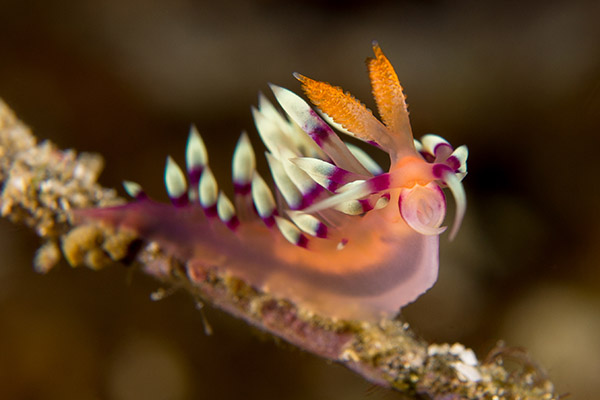
Nudibranch as hermaphroditic, meaning they contain both male and female reproduction organs, however they cannot fertilize themselves. Their organs are located on the right side of their bodies, so when they mate they line up head to tail. As long as both specimens are full developed, both of them will become fertilized and go on their own way to lay their eggs, which are easily recognised as a gelatinous spiral that somewhat resembles a rose.
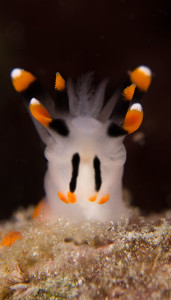 All known species are carnivorous. Some feed on sponges, others on anemones, and others on hydroids and jellyfish. Some even eat other species of nudibranchs, while some have been documented preying on members of their own species, making them cannibals. Much like the Glaucus nudibranchs, taking the stinging cells of jellyfish, many take the poison or venom from their prey to make themselves distasteful to predators.
All known species are carnivorous. Some feed on sponges, others on anemones, and others on hydroids and jellyfish. Some even eat other species of nudibranchs, while some have been documented preying on members of their own species, making them cannibals. Much like the Glaucus nudibranchs, taking the stinging cells of jellyfish, many take the poison or venom from their prey to make themselves distasteful to predators.
Much like everything else out there in our oceans, they are under threat from human activity. Habitat destruction through pollution and global warming is their main enemy, however another threat is the aquarium trade. They are notoriously difficult to keep in captivity (often dying within a few weeks) and they will not breed in tanks, meaning the only way collectors can get these beautiful critters is to snatch them from the reefs.
The incredible complexity of nudibranchs makes them a popular attraction for hobby divers and underwater photographers alike. The wall diving and muck diving of Bunaken Marine Park offers endless possibilities to find them, and more are constantly being discovered in the region. Much like all the critters we find when diving, they are seasonal, so each time you come back you may find ones that you have never seen before.

